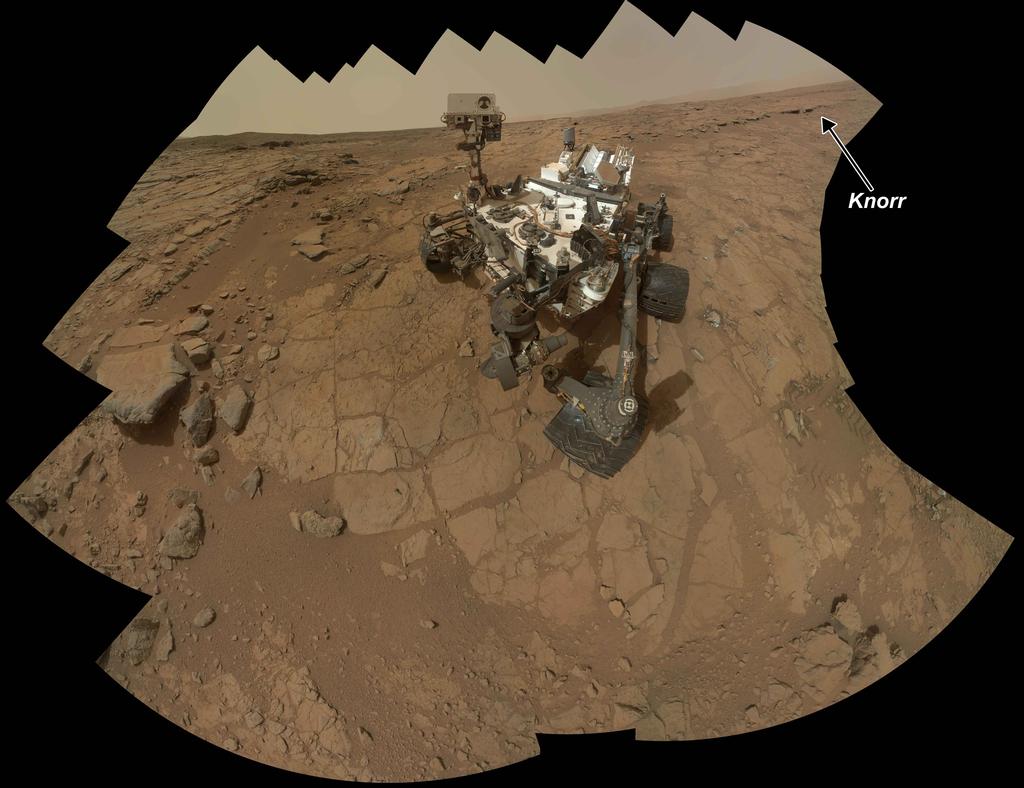
NASA's Mars rover Curiosity will be on its own for the first time over the next four weeks, thanks to an unfavorable alignment of the Red Planet, Earth and the sun.
Curiosity's handlers don't plan to send any commands to the car-size robot from today (April 4) through May 1. The sun comes between Earth and the Red Planet during this time, in a formation known as a Mars solar conjunction.
"The [communications] moratorium is a precaution against possible interference by the sun corrupting a command sent to the rover," NASA officials wrote last week in a Curiosity rover mission update.
While some mission team members may take advantage of the break to lie on a beach somewhere, Curiosity itself won't necessarily be idle. The 1-ton rover can continue doing stationary science work at a site known as Yellowknife Bay using commands sent up in advance, officials have said. [How NASA Deals with a Mars Solar Conjunction (Video)]
NASA's other active Mars spacecraft — the Opportunity rover, Mars Reconnaissance Orbiter (MRO) and Mars Odyssey orbiter — will also go solo during conjunction, though for shorter periods of time. These robotic explorers won't receive any new commands from April 9 through April 26.
MRO and Mars Odyssey help relay data from Opportunity and Curiosity to Earth. MRO goes into a four-week-long record-only mode today, but Odyssey will keep sending rover information home throughout conjunction, helping engineers keep tabs on Opportunity and Curiosity.
"We will maintain visibility of rover status two ways," Torsten Zorn, of NASA's Jet Propulsion Laboratory in Pasadena, Calif., said in a statement last month. Zorn is conjunction planning leader for Curiosity's engineering operations team. "First, Curiosity will be sending daily beeps directly to Earth. Our second line of visibility is in the Odyssey relays."
Get the Space.com Newsletter
Breaking space news, the latest updates on rocket launches, skywatching events and more!
Mars solar conjunctions come around evey 26 months, so veterans of NASA's various Mars campaigns are used to dealing with them. Opportunity is weathering its fifth conjunction, for example, and Odyssey its sixth.
But this will be the first conjunction experience for Curiosity, which landed inside Mars' huge Gale Crater this past August to determine if the Red Planet could ever have supported microbial life.

The Curiosity team has already achieved its main mission goal, announcing last month that the Yellowknife Bay area was a wet, habitable environment — perhaps a lake — billions of years ago. Researchers came to this conclusion after studying analyses Curiosity performed of material drilled from deep within an outcrop in early February.
The rover team wants to drill another rock to confirm and extend what Curiosity has already observed. But this second drilling operation won't take place until after conjunction, officials have said.
Follow Mike Wall on Twitter @michaeldwall. Follow us @Spacedotcom, Facebook or Google+. Originally published on SPACE.com.
Join our Space Forums to keep talking space on the latest missions, night sky and more! And if you have a news tip, correction or comment, let us know at: community@space.com.

Michael Wall is a Senior Space Writer with Space.com and joined the team in 2010. He primarily covers exoplanets, spaceflight and military space, but has been known to dabble in the space art beat. His book about the search for alien life, "Out There," was published on Nov. 13, 2018. Before becoming a science writer, Michael worked as a herpetologist and wildlife biologist. He has a Ph.D. in evolutionary biology from the University of Sydney, Australia, a bachelor's degree from the University of Arizona, and a graduate certificate in science writing from the University of California, Santa Cruz. To find out what his latest project is, you can follow Michael on Twitter.









